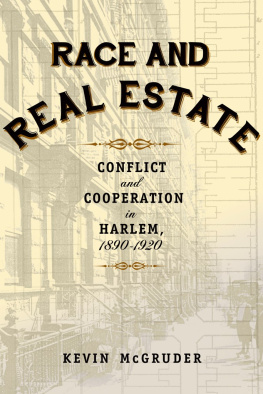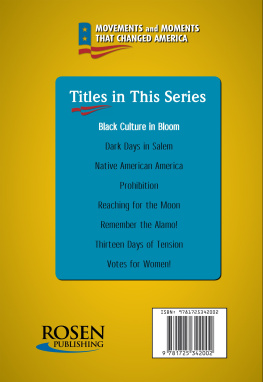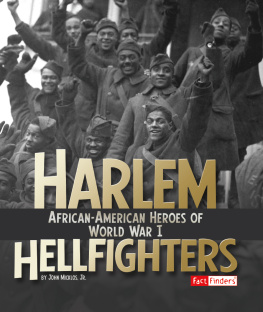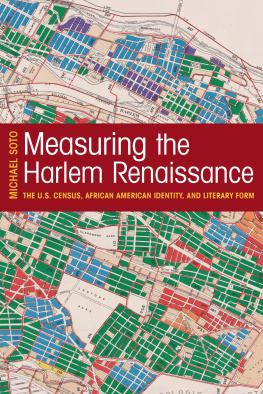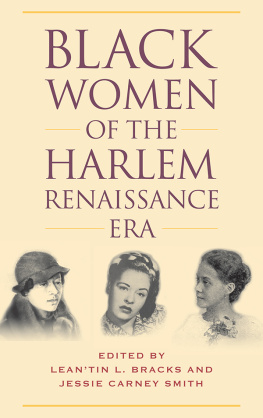RACE AND REAL ESTATE
Conflict and Cooperation in Harlem, 18901920
KEVIN McGRUDER
COLUMBIA UNIVERSITY PRESS
NEW YORK

Columbia University Press
Publishers Since 1893
New York Chichester, West Sussex
cup.columbia.edu
Copyright 2015 Columbia University Press
All rights reserved
Library of Congress Cataloging-in-Publication Data
McGruder, Kevin, 1957
Race and real estate : conflict and cooperation in Harlem, 18901920 / Kevin McGruder.
pages cm
Includes bibliographical references and index.
ISBN 978-0-231-16914-1 (cloth : alk. paper)
ISBN 978-0-231-16915-8 (pbk. : alk. paper)
ISBN 978-0-231-53925-8 (ebook)
1. Harlem (New York, N.Y.)History. 2. African AmericansNew York (State)New YorkHistory. 3. Harlem (New York, N.Y.)Race relations. 4. RacismNew York (State)New YorkHistory. 5. Social conflictNew York (State)New YorkHistory. I. Title.
F128.68.H3M295 2015
305.8009747'1dc23
2014029731
A Columbia University Press E-book.
CUP would be pleased to hear about your reading experience with this e-book at .
Cover Image: Raphael Greenbaums building at 127 West 137th Street. File photograph from Raphael Greenbaum v. Caroline Morlath, Supreme Court, New York County, Index Number 20486|1913. Antioch College. Overlay: 1897 map of West 135th between Lenox Avenue (6th) and Fifth Avenue. G. W. Bromley & Co., Manhattan, Section 6. Cover Design: Jordan Wannemacher
To my parents, Elmer and Jean McGruder
And to the memory of my twin sister,
Karen Bettina McGruder
Contents
Many people supported me in the completion of this project. At the City University of New York Graduate Center, Judith Stein provided clear comments as well as guidance and important mentor-ship. I also greatly appreciate the comments and various perspectives on my work provided by Graduate Center faculty members Joshua Freeman, Thomas Kessner, and Clarence Taylor, as well as those of Elizabeth Blackmar of Columbia University, whose appreciation of the project led me to Columbia University Press.
My friends and colleagues Kristopher Burrell, Anthony DeJesus, Carla DuBose, and Carrie Pitzulo, along with Melvin Coston, provided feedback as well as equally important opportunities to commiserate regarding our research and academic adventures. My pursuit of a career in academia was motivated by my friendship with Martia Goodson, whose example as a scholar of African American history inspired me to consider doctoral study.
I appreciate the funding provided by the National Endowment for the Humanities for the Scholars-in-Residence Program at the Schomburg Center for Research in Black Culture of the New York Public Library, in which I was a participant during the 20112012 year. I particularly want to acknowledge the thought-provoking questions by the programs director, Colin Palmer, and assistant director, Venus Green, and the feedback of my fellow scholars, all of whom provided important suggestions which I believe helped me to strengthen this manuscript.
A major source of documents for this project was the real estate records available at the Office of the City Register. I want to thank Dennis Nesmith of that office for providing invaluable assistance that revealed what to some may seem an arcane and obscure source actually to be a treasure trove of information.
At the very beginning of this journey, when I was searching for a viable topic, Craig Wilder provided me with valuable advice on approaching the study of Harlem, which enabled me to identify this topic and develop this project.
The friendship and fellowship of my colleagues at Antioch College has been an important source of support as well. The interest in my scholarship by my church families in New York City at the Abyssinian Baptist Church and in Yellow Springs, Ohio, at Central Chapel African Methodist Episcopal Church have been important reminders that my work has relevance beyond the halls of academia, and that the community formation efforts of a century ago that I write about in this book are continuing today and are equally important now.
Completion of this project has been a labor of love for which I especially thank my parents, Elmer and Jean McGruder, who provided my siblings and me with a love of learning that transforms projects that might seem daunting into exciting opportunities for exploration and discovery.
On a Saturday afternoon in July 1893, Marie F. Posey, an African American, sat at her kitchen window looking at workmen drilling on a rock outcropping behind her apartment building on East 122nd Street in Harlem. Her eight-year-old daughter, Marie Adel, was at her side. In the adjacent dining room Mrs. Poseys mother-in-law, Mary, watched the other three Posey children: Irma, Austin, and Reginald. In the apartment one floor below, Mary McAdam, a white woman, spoke with her neighbor Albert Graham. The Saturday routines of these neighbors were suddenly interrupted by a deafening blast that sent a boulder directly into the apartment wall where Mrs. Posey and her daughter were sitting. They were killed instantly. In the dining room, the blast threw the senior Mrs. Posey to the other side of the room and scattered the children across the floor. Downstairs, Mrs. McAdam, who had also been sitting near the window, was knocked unconscious. Her visitor, Mr. Graham, was thrown across the room. The people responsible for the blast, part of a crew working to level out one of Manhattans many rock outcroppings to prepare the land for development, fled as soon as they saw the results of their negligent use of dynamite. They were later arrested.
East 122nd Street was a new block for black New Yorkers in 1893, but the area to the south and east of the Posey apartment building had been a settlement for them for quite some time. In 1902 social worker Mary Rankin Cranston explained that New Yorks oldest Negro colony, which has been in existence for twenty-five years, is situated in Harlem and is bounded by 97th and 103rd streets and 2nd and 3rd avenues.
In addition to Harlem, Cranstons description included several more recent areas of black settlement in Manhattan: the area between Sixth and Seventh Avenues from 26th Street to 33rd Street; the area between 36th and 44th Streets from Seventh Avenue west to the Hudson River; and 47th Street between Broadway and Eighth Avenue. Black New Yorkers were dispersed in many parts of the city before 1900, and contrary to Cranstons observation, there were black settlements even older than Harlem, such as Greenwich Village, which was losing black population at that time. The dispersed nature of African American settlement in Manhattan before 1900 was a testament to both the diverse and somewhat fluid racial attitudes of white New Yorkers and the small number of blacks living in New York City before the twentieth century.
By 1900 the Posey family, victims of the 1893 explosion, had moved from 122nd Street, but not to another part of Harlem. In 1900 they were living on Gates Avenue in Brooklyn. There Frank Posey, who had lost his wife and his daughter in the explosion, reconstructed his household. He married Elizabeth, a New Yorker whose parents were from Virginia. His children Irma and Austin were not listed in the household, suggesting that they may have died from their injuries in the explosion. Reginald, the elder son, was joined by five other siblings who may have been Elizabeths children. Although the Poseys did not remain in Harlem, that Manhattan community became an increasingly attractive refuge for many other blacks seeking to escape the overcrowding and sporadic violence of midtown. The surge of investment activity in Harlem in the last decade of the nineteenth century transformed the community. Although newspapers at the turn of the twentieth century often characterized Harlem residents as well-to-do people, the laboring class, like the Poseys, and the poorblack and whitealso lived in Harlem in the 1890s.
Next page

